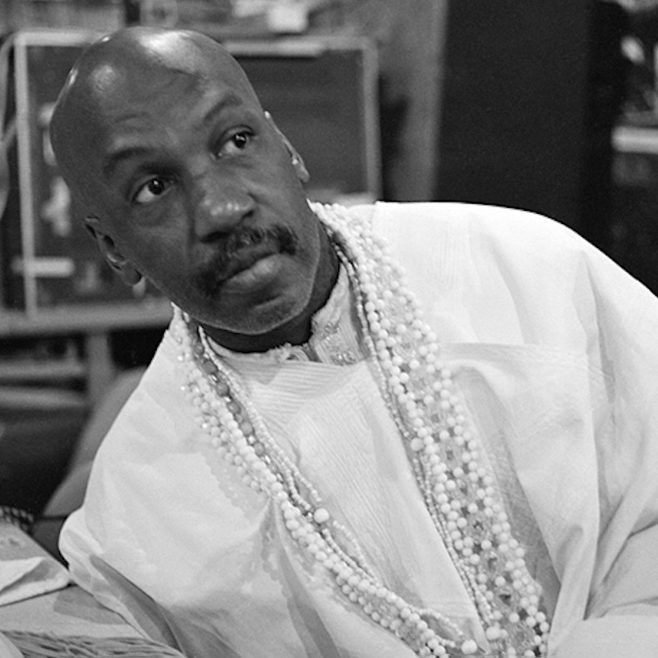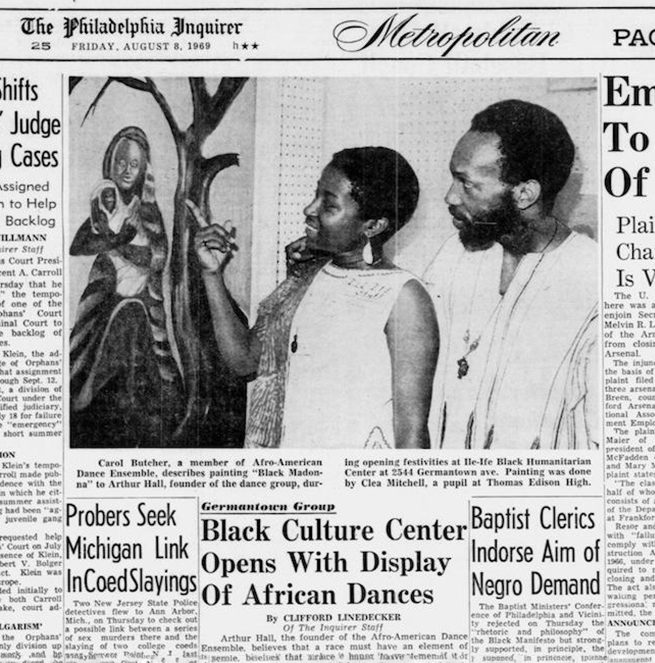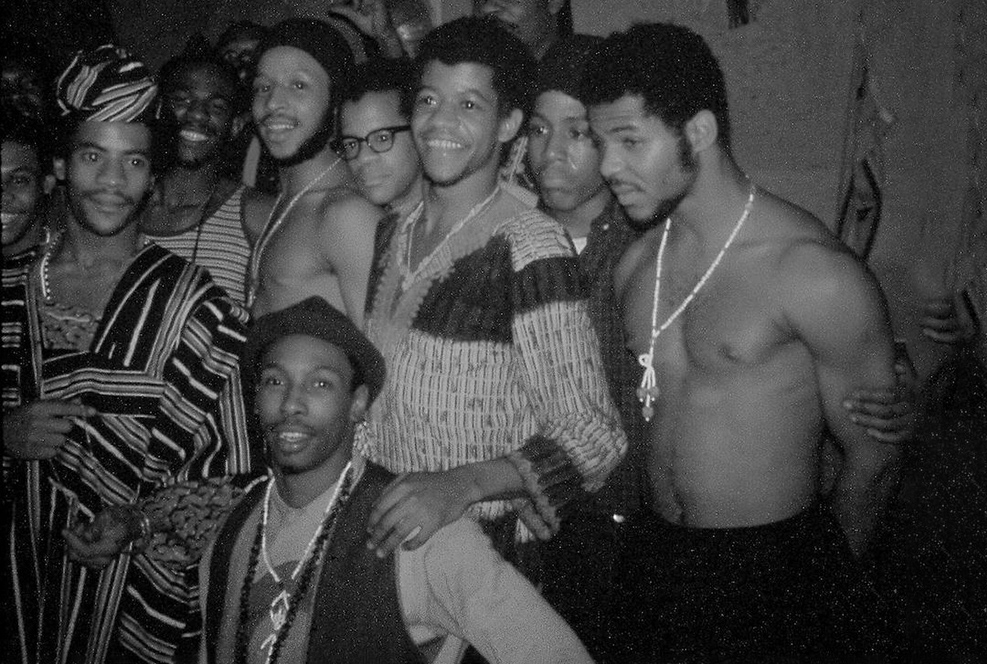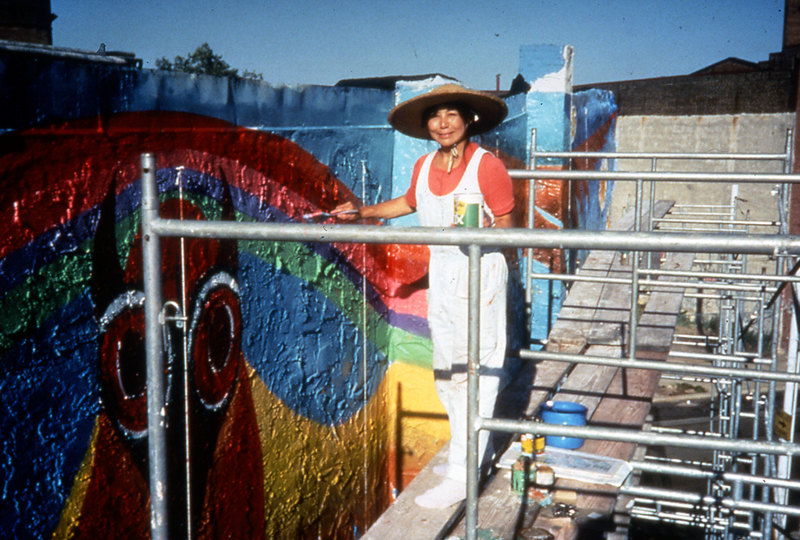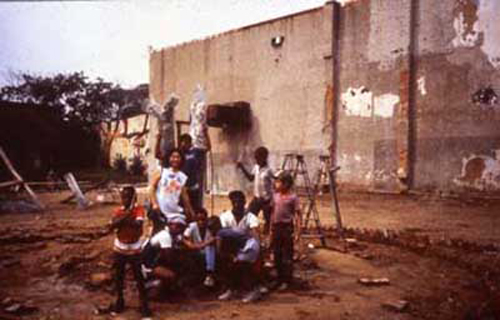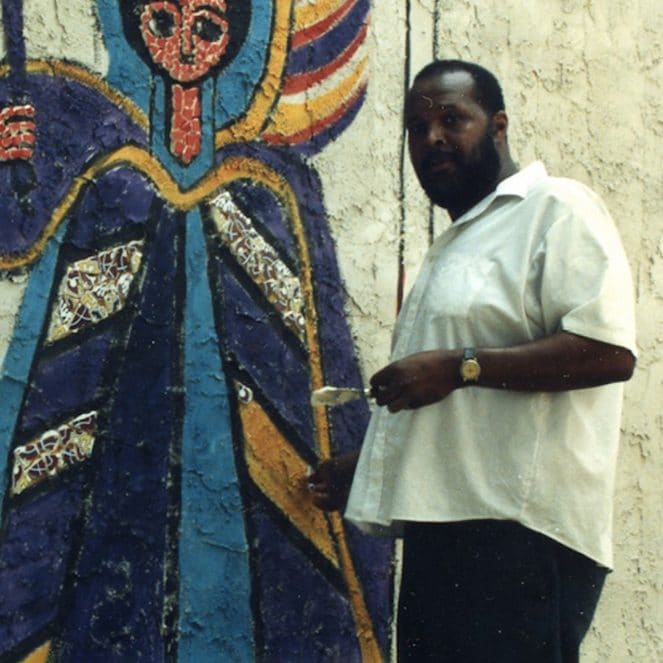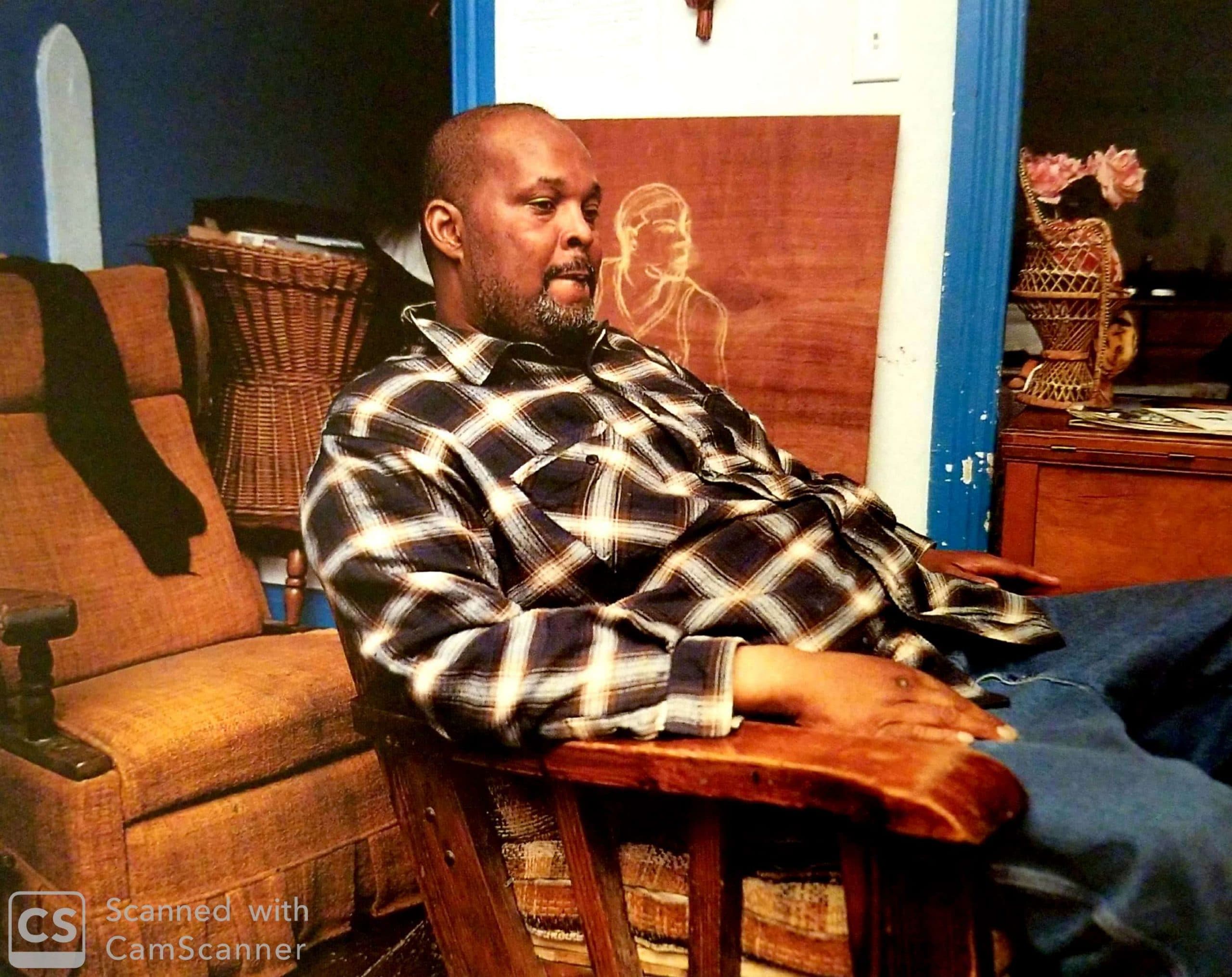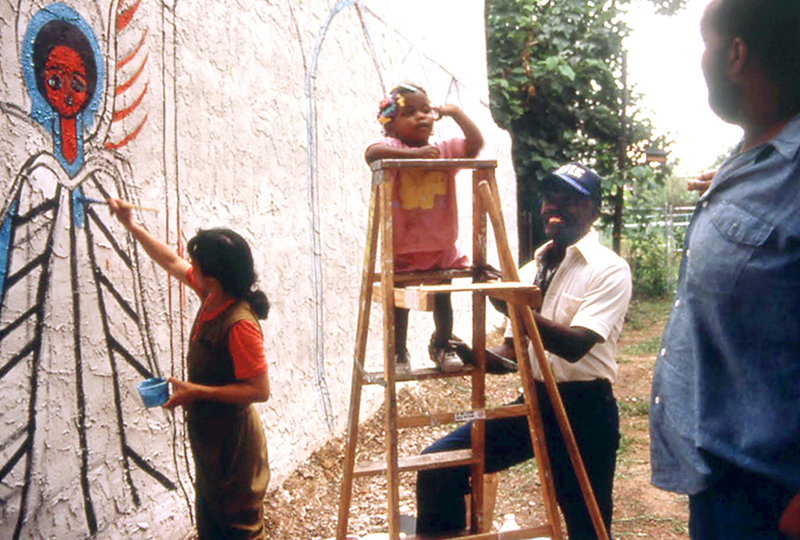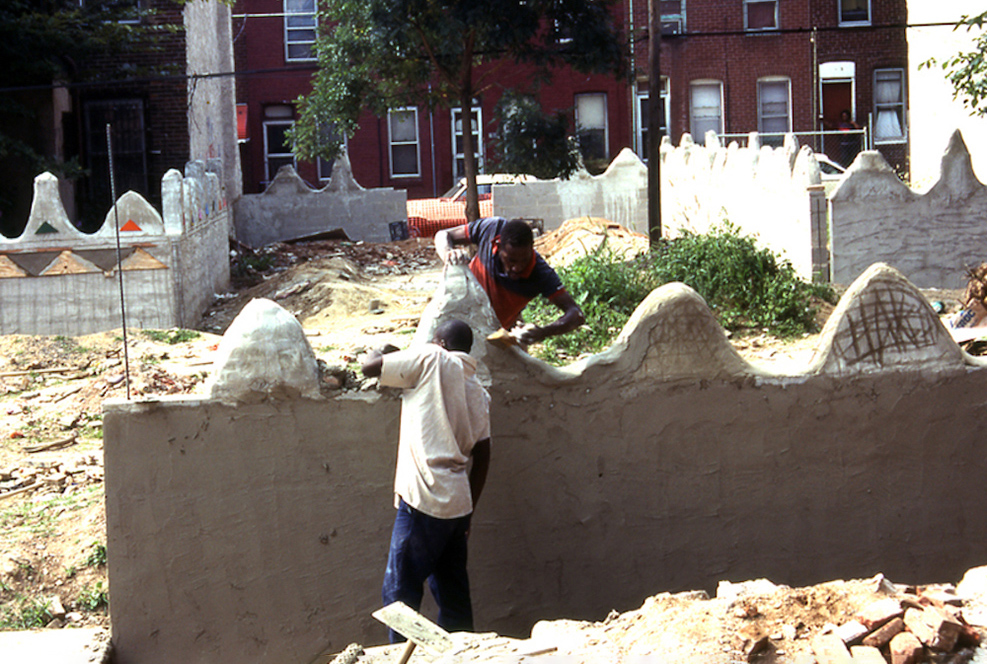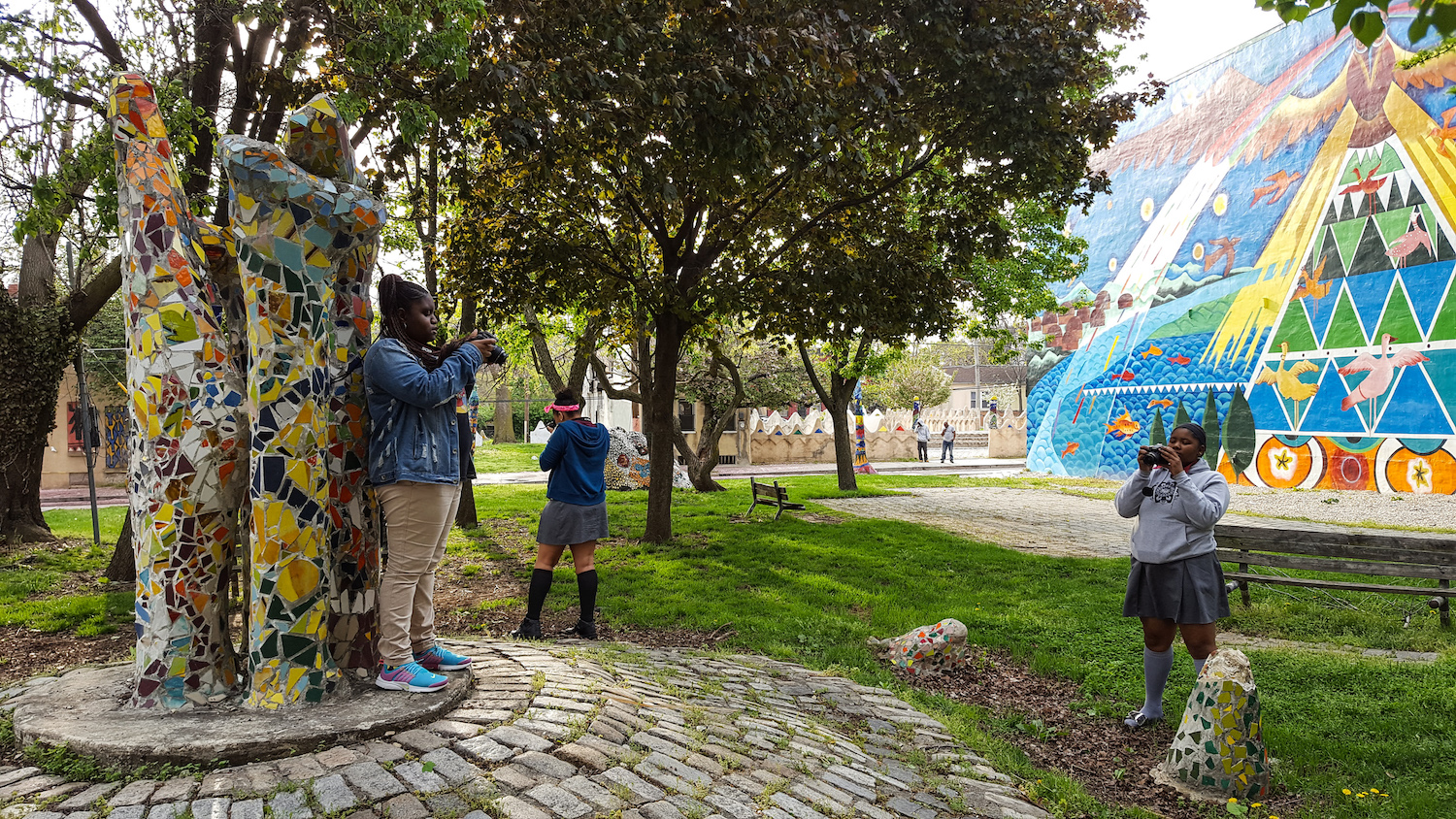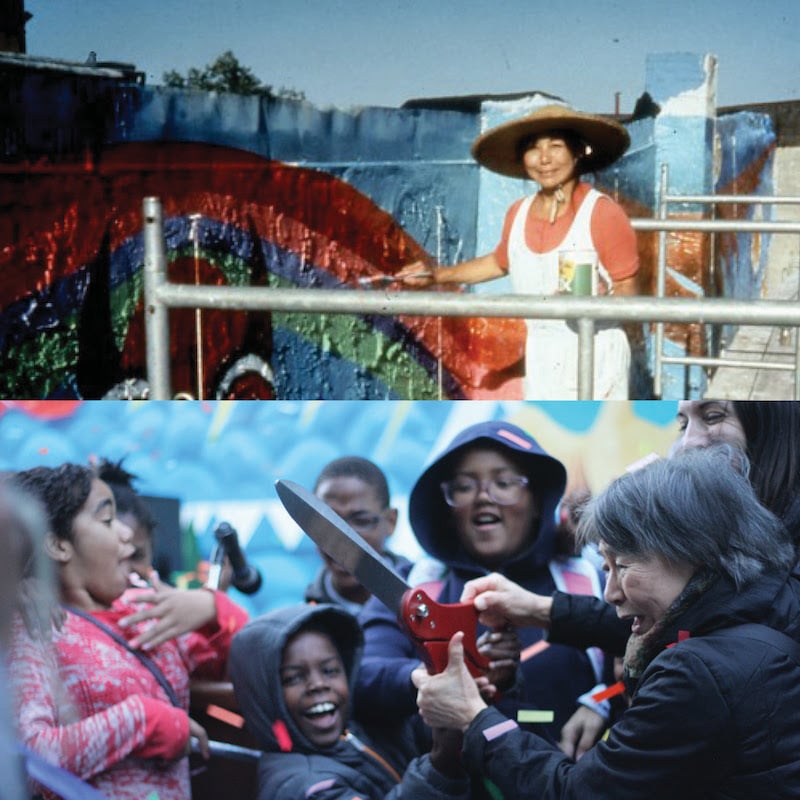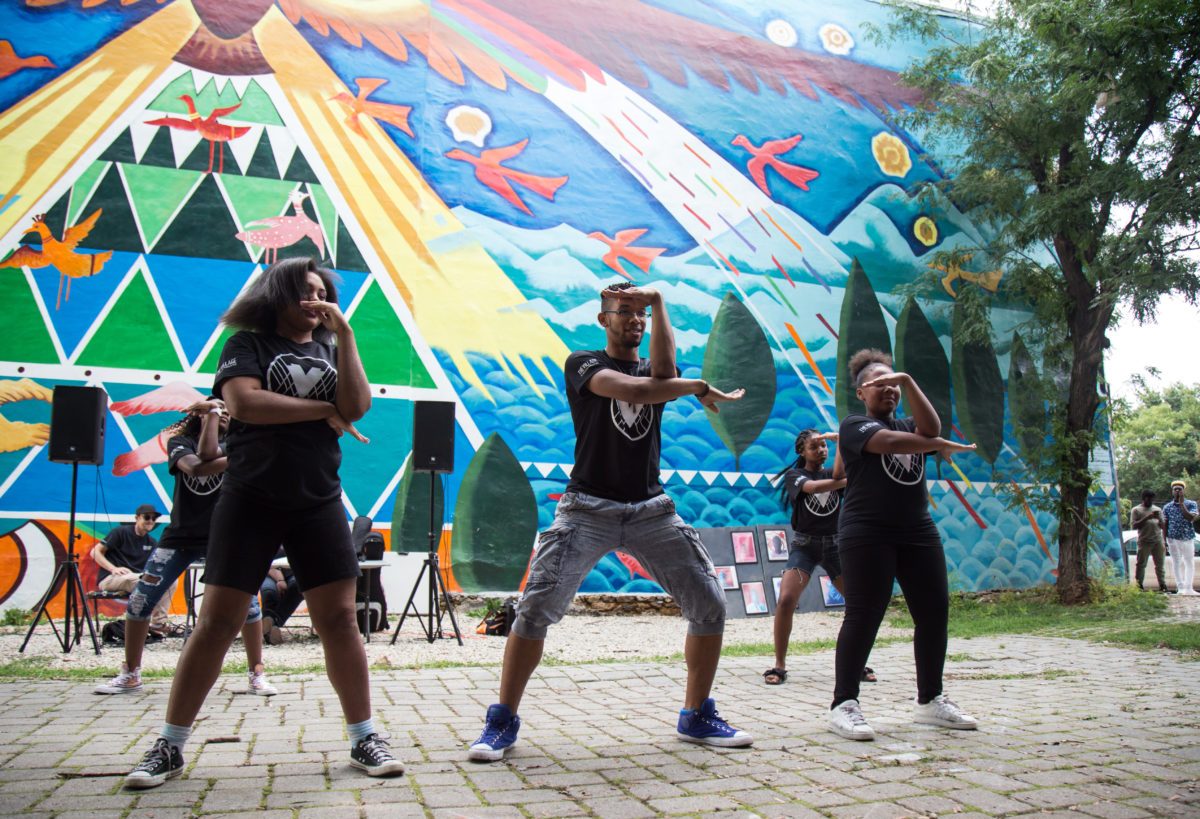OUR MISSION
ABOUT US
The Village of Arts and Humanities is a 37-year-old arts and community revitalization organization rooted in Philadelphia’s deeply disinvested Fairhill-Hartranft neighborhood. Our mission is to support artists and Black community residents to imagine, design, and build a more just and equitable society.
-
The Story Begins
The story of The Village of Arts and Humanities begins with Arthur Hall. A dance prodigy and master teacher, Arthur Hall dedicated his life to teaching West African dance and drumming traditions to Black people. Arthur said, “I saw in the dances a chance to bring grandeur back into blackness.”
-
Ile Ife Black Humanitarian Center Opens
In 1968, Arthur and his friends opened the Ile Ife Black Humanitarian Center in what is now The Village’s main programming building. Ile Ife means “House of Love” or “House of Creation” in the Yoruba language.
-
Ile Ife and the Black Arts movement
Ile Ife became a groundbreaking organization in the Black Arts Movement, traveling internationally to perform. During the turbulent ’60s and ’70s, Ile Ife filled a deep need in a community weathered by sustained disinvestment and systemic racism. Arthur Hall created a space where the community could become a part of its own rebirth.
-
Lily comes to The Village
In 1986, Arthur hired a young Chinese artist named Lily Yeh to help transform the vacant lots that bordered Ile Ife’s building. He asked his friend JoJo Williams, a local mason and handyman, to help her and introduce her to the neighborhood.
-
Lily and JoJo create Ile Ife Park
Together Lily and JoJo transformed the vacant lot into Ile Ife Park, complete with a mural and sculptures to represent the trees they planted there and hoped would grow tall one day. Children passing by after school stopped to help, and brought their parents to meet Lily and JoJo. Lily became fast friends with JoJo and an art teacher at Ile Ife.
-
Big Man joins The Village family
Lily and JoJo soon had help building parks: James “Big Man” Maxton, a friend of JoJo’s. Big Man stood 6-foot-8 and and was an all-state football lineman. A leg injury ended his athletic dreams, and at 18 he moved to Philadelphia in search of a future. He found the drug life instead, becoming a runner and addict. Still an addict in 1988, he began to help JoJo as he worked on the parks. Over the years, Big Man blossomed into an energizing organizer of community renovation efforts and a skilled mosaic artist, craftsman and teacher. He served as Operations Manager of The Village in addition to his artistic role. Big Man died on Feb 1, 2005 in his home on North Alder Street. His spirit lives on in the laughter of the children who still run through the Village parks.
-
Big Man speaks about The Village
“I have watched as so many different races and nationalities of people have come to this once hell-hole and speak about its beauty…I’ve seen the light in the eyes of planners and developers from other urban areas who hope to export a piece of this particular concept to their community. It has given me a great sense of pride to read in the newspaper and see on TV people talking about my community in relation to beauty and hope rather than drugs and death. To see the little kids run and play happily at The Village through a maze of colored sculpture-filled gardens as though they were in another place and time…” – James Maxton
-
Ile Ife becomes The Village
In 1988, Arthur Hall left Ile Ife to return to his individual artistic practice. With Big Man and JoJo, Lily created a new organization that honored Ile Ife’s legacy and widened its mission to include arts-based neighborhood revitalization: The Village of Arts and Humanities. The Village of the Arts and Humanities, Inc. was formally incorporated in 1989 as a non-profit organization.
-
The Village Expands its Footprint
Under the guidance of Lily and Big Man, the Village construction crew — composed of adults from the neighborhood — built over 20 parks, gardens, and sculptural pieces at the Village. Park elements are inspired by West African sacred art and building traditions, local neighborhood aesthetics, and art from around the world.
-
The Village Inspires through Art-based Intervention
Lily, Big Man and Jojo’s unique approach to transforming disinvested properties into vibrant art parks has inspired countless visitors, artists, and neighborhood leaders from the U.S. and internationally. Today, The Village maintains 15 art parks and 10 programs buildings in The Village heart.
-
Lily Yeh steps down from The Village
In 2004, Lily left the organization that transformed her life to bring its lessons to the world. She started Barefoot Artists, a non-profit that brings the transformative power of art to the most impoverished communities in the world.
-
We Work Together to Continue Our Legacy
Today, we know what Arthur, Lily, Big Man, and JoJo could not yet predict — year after year, the learning space they created has been deemed worthy of protection, love, and ongoing use by the community. Together we are working to ensure The Village can last not only another three decades but another 100 years.
- 1934
- 1968
- 1970s
- 1986
- 1986-9
- 1988
- 1988
- 1989
- 1990s
- 1990s
- 2004
- Present
The Village values art as its most powerful and effective tool for catalyzing healthy and sustainable societal change. Art, in this context, is creativity in thinking, in methodology, and in implementation.
Our 30-year legacy is anchored in artist-facilitated community building beginning with the work of Arthur Hall and the Ile Ife Black Humanitarian Center (predecessor to The Village) and Village Founder, Lily Yeh.
Today, The Village remains a community-rooted, anchor institution,
- comprising 15 art parks and 10 programs buildings,
- annually impacting 1200 community residents,
- enlisting the help of 400 volunteers,
- and engaging 350 teens that attend The Village’s after-school and summer programs.
Our seven core programs work at the intersection of art, education and social justice to:
- amplify the creative power of our community,
- build bridges across race, class, age and expertise,
- question and replace unjust and ineffective systems,
- activate passion and enhance skills present in community youth/adults,
- and construct new avenues towards civic engagement.
